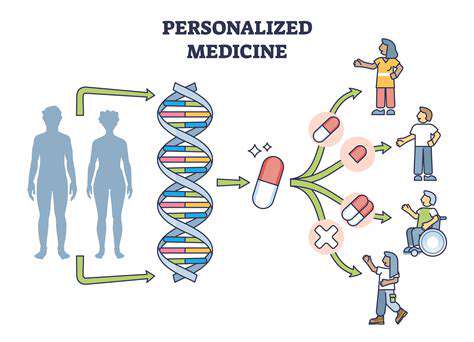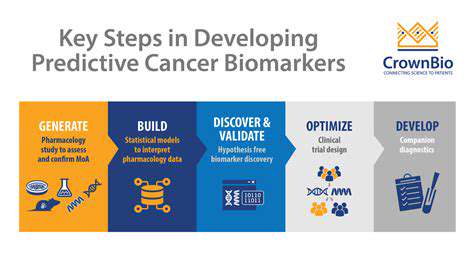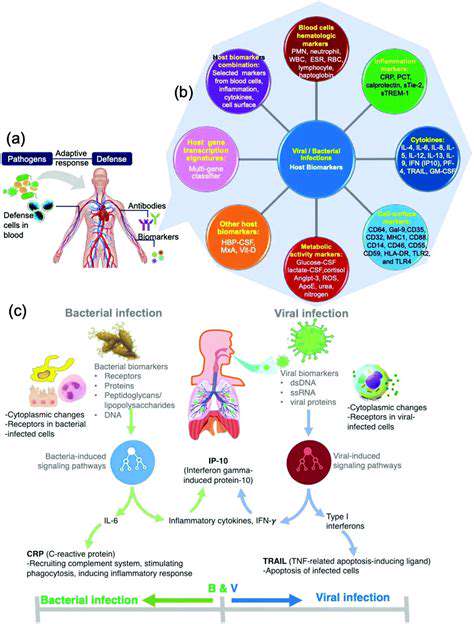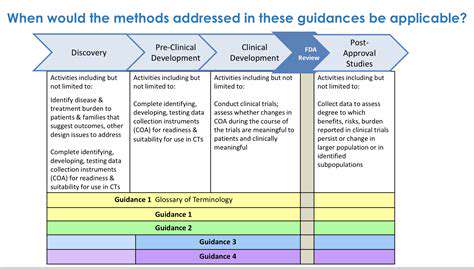The Growing Importance of Gene Editing in Oncology
The Fundamentals of Gene Editing
Gene editing technologies, like CRISPR-Cas9, offer unprecedented precision in modifying DNA. This allows scientists to target specific genes involved in cancer development, potentially correcting faulty genes or disabling oncogenes. Understanding the basic mechanisms of these technologies is crucial for appreciating the potential of gene editing in oncology and the challenges that remain.
The process of gene editing typically involves identifying the specific DNA sequence to be altered, designing a guide RNA to target that sequence, and introducing the editing machinery (like Cas9) to cut and potentially replace the DNA. This targeted approach differs significantly from traditional chemotherapy, which often harms healthy cells alongside cancerous ones.
Targeting Specific Cancer-Driving Genes
Cancer arises from genetic mutations that disrupt cellular processes. Gene editing holds the promise of directly addressing these mutations. By targeting specific genes known to drive cancer development, such as oncogenes and tumor suppressor genes, gene editing could potentially halt or reverse the cancerous process.
Researchers are actively investigating the role of various genes in different cancer types. This allows them to tailor gene editing strategies to specific cancers, increasing the likelihood of success and reducing off-target effects.
Correcting Hereditary Predispositions
Many individuals inherit genetic predispositions to certain cancers. Gene editing offers a potential pathway to correct these inherited mutations, preventing cancer development altogether. This is a particularly exciting prospect for hereditary cancers, where individuals have a significantly elevated risk.
If a person inherits a faulty gene that predisposes them to cancer, gene editing could potentially repair that gene, reducing or eliminating the risk altogether. This preventative approach is a significant advance over current treatments focused on detecting and treating cancer after it develops.
Off-Target Effects and Safety Concerns
While gene editing holds immense promise, there are significant safety concerns to address. One major concern is the possibility of off-target effects, where the editing machinery inadvertently modifies genes other than the intended target. This can lead to unintended consequences, potentially causing further health problems.
Rigorous research and testing are crucial to minimize these risks. Scientists are developing more precise gene editing tools and methods to reduce off-target effects and enhance the safety profile of these therapies. Developing new ways to deliver the editing tools and monitor their effects are also important.
Ethical Considerations in Gene Editing
The use of gene editing technologies raises complex ethical considerations, particularly regarding germline editing (editing the genes in reproductive cells). Ethical review boards and guidelines are essential to ensure responsible development and application of these technologies.
Public discourse and engagement are also vital to understand the public's concerns and perspectives surrounding gene editing, ensuring that these powerful tools are used ethically and responsibly. This includes weighing the potential benefits against the potential risks and addressing the societal implications.
Delivery Mechanisms and Clinical Trials
Efficient delivery of gene editing tools to target cells within the body is a critical hurdle. Developing effective delivery methods is crucial for translating gene editing research into clinical applications. Different approaches, including viral vectors and non-viral delivery systems, are being investigated.
Clinical trials are underway to evaluate the safety and efficacy of gene editing therapies in different cancers. These trials provide valuable data on the potential benefits and limitations of gene editing in the treatment of hereditary cancer.
The Future of Gene Editing in Oncology
The future of gene editing in oncology is promising, offering the potential to revolutionize cancer treatment and prevention. Continued research, development, and clinical trials will be essential to refine these technologies and address safety concerns.
As gene editing technologies mature, they may become an integral part of a personalized medicine approach to cancer care, offering tailored treatments based on an individual's genetic profile and hereditary predisposition.

Ethical Considerations and Future Directions
Ethical Implications of Germline Editing
Germline gene editing, targeting the reproductive cells, raises profound ethical concerns. The potential for unintended consequences, including unforeseen health problems in future generations, necessitates meticulous consideration. These modifications are heritable, meaning any errors or unintended edits could propagate through families, potentially creating unforeseen and irreversible health issues. Careful risk assessment and societal dialogue are crucial before widespread implementation.
The ethical implications extend beyond the scientific realm, touching upon societal values and justice. Unequal access to such powerful technology could exacerbate existing health disparities, potentially creating a genetic divide between the privileged and the less fortunate. Fair distribution and equitable access to gene editing technologies are essential to ensure responsible and just applications.
Societal Impact and Public Perception
The introduction of gene editing for hereditary cancer syndrome carries significant societal implications. Public perception and acceptance play a crucial role in the adoption and regulation of this technology. Building trust and fostering open dialogue about the benefits, risks, and limitations of gene editing is paramount. Understanding public concerns and addressing them through education and transparent communication is essential for responsible development and implementation.
Public engagement and education campaigns are vital to foster informed decision-making. Providing accessible and accurate information about the technology, its potential applications, and the associated ethical considerations can help shape informed public opinion and encourage responsible use.
Regulatory Frameworks and Governance
Robust regulatory frameworks are essential to govern the development and application of gene editing technologies for hereditary cancer syndromes. Clear guidelines and regulations are needed to ensure safety, efficacy, and ethical considerations are prioritized. International collaboration and harmonization of regulations are crucial to address the global implications of this technology.
Independent oversight bodies and ethical review committees should be established to monitor research and clinical trials involving gene editing. These bodies can provide crucial expertise and guidance to ensure ethical conduct, safety, and responsible development of this technology.
Long-Term Monitoring and Evaluation
Long-term monitoring and evaluation of gene editing interventions are crucial to understanding the long-term effects and potential risks. Comprehensive data collection and analysis are necessary to assess the safety and efficacy of gene editing therapies for hereditary cancer syndromes. This includes monitoring the health of individuals undergoing gene editing procedures and their offspring across multiple generations.
Longitudinal studies are essential to understand the potential long-term implications, both physical and psychological. Researchers must be prepared to adapt their monitoring strategies as our understanding of gene editing and its effects deepens over time. This requires ongoing research and development to refine the technology and its applications.
Alternative Approaches and Complementary Therapies
Exploring alternative approaches and complementary therapies alongside gene editing is crucial to provide a comprehensive and holistic approach to managing hereditary cancer syndromes. These alternative strategies may include lifestyle modifications, preventive screenings, and targeted therapies to reduce the risk of cancer development. The combination of gene editing with other preventative measures could offer a more robust and effective strategy.
Supporting research into preventative measures and complementary therapies, such as early detection and aggressive preventative care, is essential to creating a comprehensive strategy for managing hereditary cancer risk. A multifaceted approach that combines gene editing with other preventative measures can optimize outcomes and improve patient care.
Future Directions and Research Priorities
Future research priorities should focus on improving the precision and safety of gene editing techniques. Developing more sophisticated gene editing tools and strategies to minimize off-target effects and ensure precise editing will greatly enhance the efficacy and safety of these therapies. This includes further investigation into the mechanisms of gene regulation and cellular function.
Exploring the potential of gene editing to target multiple genes associated with hereditary cancer syndromes is another crucial area of focus. A comprehensive understanding of gene interactions and pathways involved in cancer development and progression is necessary to fully realize the potential of gene editing in preventing and treating hereditary cancer syndromes.












